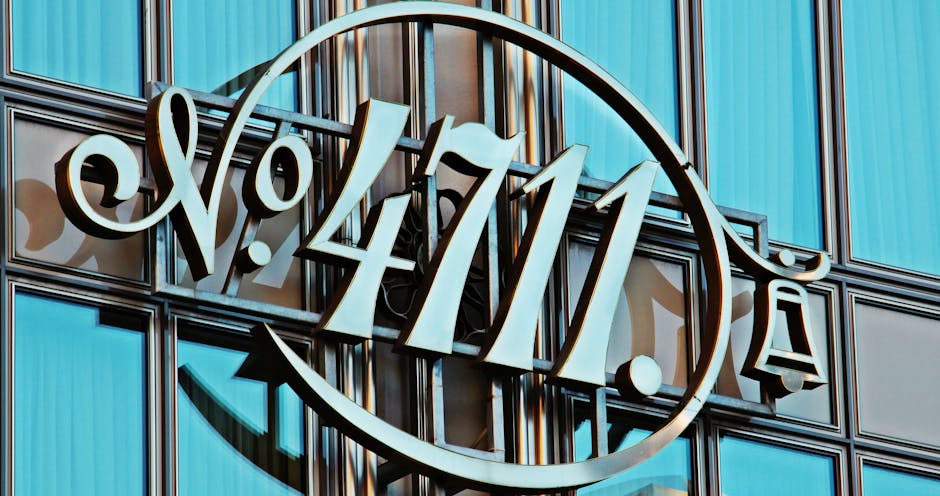
Logo design may seem like a mysterious, cryptic art form – like trying to decipher ancient hieroglyphics or figuring out why cats always land on their feet. But fear not, dear reader! We are here to unravel the enigma of strategic logo design and decode the secret language of logos. So sit back, grab a cup of coffee (or tea, we don’t judge), and prepare to embark on a journey through the whimsical world of branding and design. Welcome to the wild and wacky world of decoding the art of strategic logo design!
Understanding the Purpose of a Logo Design
Ever wondered why logos are so important? They’re not just pretty pictures, you know. They actually serve a very specific purpose! Let’s dive into the fascinating world of logo design and uncover the secrets behind these little works of art.
First and foremost, a logo is like a visual handshake between a company and its customers. It’s the first thing people see when they come across a brand, so it needs to make a good impression. A well-designed logo can instantly convey the personality, values, and essence of a company. It’s like the brand’s signature – unique, memorable, and unmistakable.
Another key purpose of a logo design is to establish brand recognition. Think of it as a superhero costume – it helps the brand stand out in a crowded marketplace. A strong logo can build trust and loyalty among customers, creating a sense of familiarity and authenticity. Plus, it makes it easier for people to remember and recognize the brand, which is crucial for building brand awareness.
But wait, there’s more! A logo also plays a crucial role in marketing and advertising. It’s like the MVP of a brand’s visual identity, appearing on everything from business cards to billboards. A versatile logo can be resized, reshaped, and reproduced across different platforms without losing its impact. It’s the ultimate multitasker – promoting the brand, attracting customers, and leaving a lasting impression.

Key Elements of an Effective Logo
When it comes to creating an effective logo, there are a few key elements that you simply cannot afford to overlook. Let’s take a look at what these essential components are:
- Simplicity is key: Your logo should be simple enough to be memorable and versatile. Avoid cluttering your design with too many elements, as it can make your logo hard to recognize.
- Color scheme: The colors you choose for your logo are crucial. They should be eye-catching, but also reflect your brand’s personality. Plus, you want to ensure your logo looks just as good in black and white as it does in color.
- Uniqueness: Your logo should be distinctive and stand out from the competition. Avoid using cliché symbols or overused fonts – be creative and think outside the box!
Remember, your logo is often the first thing people will see when they come into contact with your brand, so it’s important to get it right. By focusing on these key elements, you’ll be well on your way to creating a logo that truly represents your brand and leaves a lasting impression on your audience.
The Science Behind Color Selection in Logo Design
When it comes to logo design, choosing the right color is crucial. But did you know that there is actually science behind color selection in logo design? Let’s dive into the fascinating world of colors!
First off, colors can evoke different emotions and feelings in people. That’s why it’s important to choose colors that align with your brand’s personality and message. For example, blue is often associated with trust and professionalism, making it a popular choice for corporate logos.
On the other hand, red can signify energy and excitement, which is why many food and beverage companies use it in their logos. And let’s not forget about green, the color of nature and growth, perfect for eco-friendly and sustainable brands.
So next time you’re designing a logo, don’t just pick colors randomly. Think about the message you want to convey and choose your colors wisely. Your logo will thank you!

typography-and-its-impact-on-branding”>Typography and Its Impact on Branding
When it comes to branding, typography plays a crucial role in making a lasting impression on your audience. Imagine a world where all brands used Comic Sans as their primary font – chaos would ensue! Here’s how typography can either make or break your brand:
1. Establishing Brand Identity: Your choice of font can convey the personality and values of your brand. Whether you opt for a sleek sans-serif or a classic serif, make sure it aligns with your brand’s image and message.
2. Creating Visual Hierarchy: Typography helps guide the viewer’s eye through your content. By using different font sizes and weights, you can emphasize key information and lead the reader to important calls-to-action.
3. Eliciting Emotional Responses: Believe it or not, fonts can evoke different emotions. Want to convey trust and professionalism? Opt for a traditional serif font. Going for a more modern and edgy vibe? A bold sans-serif might be the way to go.
In conclusion, never underestimate the power of typography in shaping your brand’s perception. Choose your fonts wisely, and your branding efforts will be off to a flying start!
Utilizing Negative Space in Logo Design
When it comes to logo design, sometimes less is more. Utilizing negative space can add an element of surprise and intrigue to your logo, making it more memorable and visually appealing. Here are a few tips and tricks for incorporating negative space into your logo design:
- Keep it simple: Negative space works best when it is used sparingly. Try to avoid cluttering your logo with too many elements, and instead focus on creating a clean and concise design.
- Think outside the box: Negative space doesn’t always have to be used to create hidden images or shapes. Get creative with how you use negative space in your logo design – the possibilities are endless!
- Play with text: Negative space can also be used to create interesting typography effects in your logo. Experiment with different fonts and layouts to see what works best for your brand.
Remember, negative space is a powerful tool in logo design, but it should be used wisely. Too much negative space can make your logo look incomplete or unbalanced, so be sure to find the right balance for your design. With a little bit of creativity and a keen eye for detail, you can create a logo that stands out from the crowd and leaves a lasting impression on your audience.
simplicity-and-complexity-in-logo-creation”>Balancing Simplicity and Complexity in Logo Creation
When it comes to creating a logo, finding the balance between simplicity and complexity can be a tricky task. On one hand, you want your logo to be clean and easily recognizable. On the other hand, you don’t want it to be too simple and risk blending in with the competition.
One way to strike this balance is to start with a simple concept and then gradually add layers of complexity. Think of it like building a burger – you start with a basic patty and bun, then slowly add toppings like cheese, lettuce, and bacon. Before you know it, you’ve got a deliciously complex masterpiece on your hands.
Another approach is to use negative space cleverly in your design. By incorporating hidden elements or optical illusions, you can create a logo that is both simple at first glance but reveals intricate details upon closer inspection. It’s like a magic trick for your brand identity!
Remember that a good logo should be versatile and scalable, so it’s important to test how it looks across different mediums and sizes. Whether it’s on a business card, a billboard, or even a tiny social media profile picture, your logo should be able to adapt without losing its impact. So, keep experimenting and don’t be afraid to mix simplicity with a dash of complexity to create a logo that truly stands out.
FAQs
Why is logo design important for a business?
Well, imagine you’re going on a date. You wouldn’t show up in your pajamas, right? Your logo is like your business’s fancy outfit – it helps make a great first impression and tells people what you’re all about.
What makes a good logo design?
Think of a good logo like a superhero – it’s simple, memorable, versatile, and represents your brand’s values. Plus, it looks good on a cape.
How can a logo attract customers?
Imagine your logo as a yummy slice of pizza – it should be visually appetizing and make people hungry for what you’re serving. It should also stand out from the crowd like a pineapple pizza in a sea of plain cheese slices.
Why is it important to consider color in logo design?
Color is like the spice of logo design – it can evoke emotions, convey your brand’s personality, and make your logo pop like a neon sign in a dark alley. Just remember, no one likes a bland logo salad.
How can a logo help with brand recognition?
Think of your logo as your brand’s name tag – it helps people remember who you are and what you do. It’s like having a catchy jingle stuck in their heads, but less annoying.
In Conclusion: Unraveling the Mystical World of Logo Design
And there you have it, dear readers! The secret to cracking the code of strategic logo design lies in a combination of creativity, research, and a dash of magic (not literally, of course). So go forth and create logos that not only look good but also make a lasting impact on your audience. Remember, the logo is the face of your brand, so make sure it’s a face worth remembering! Now, go forth and design fearlessly!









